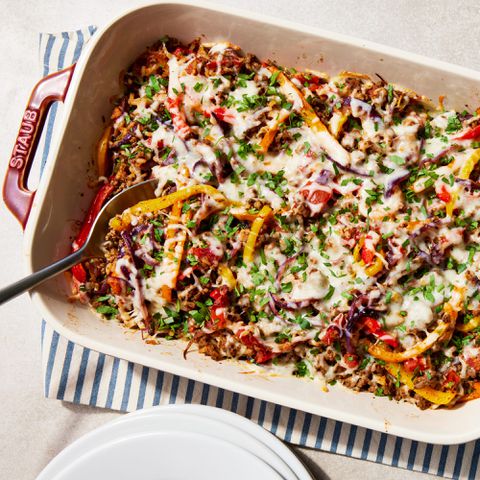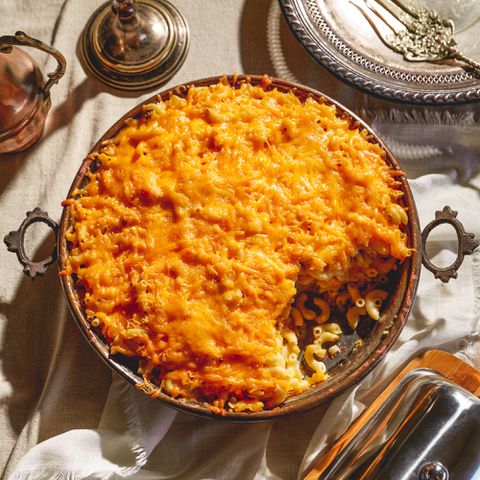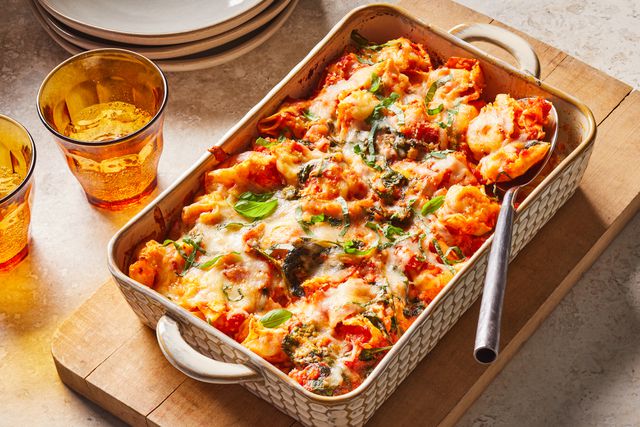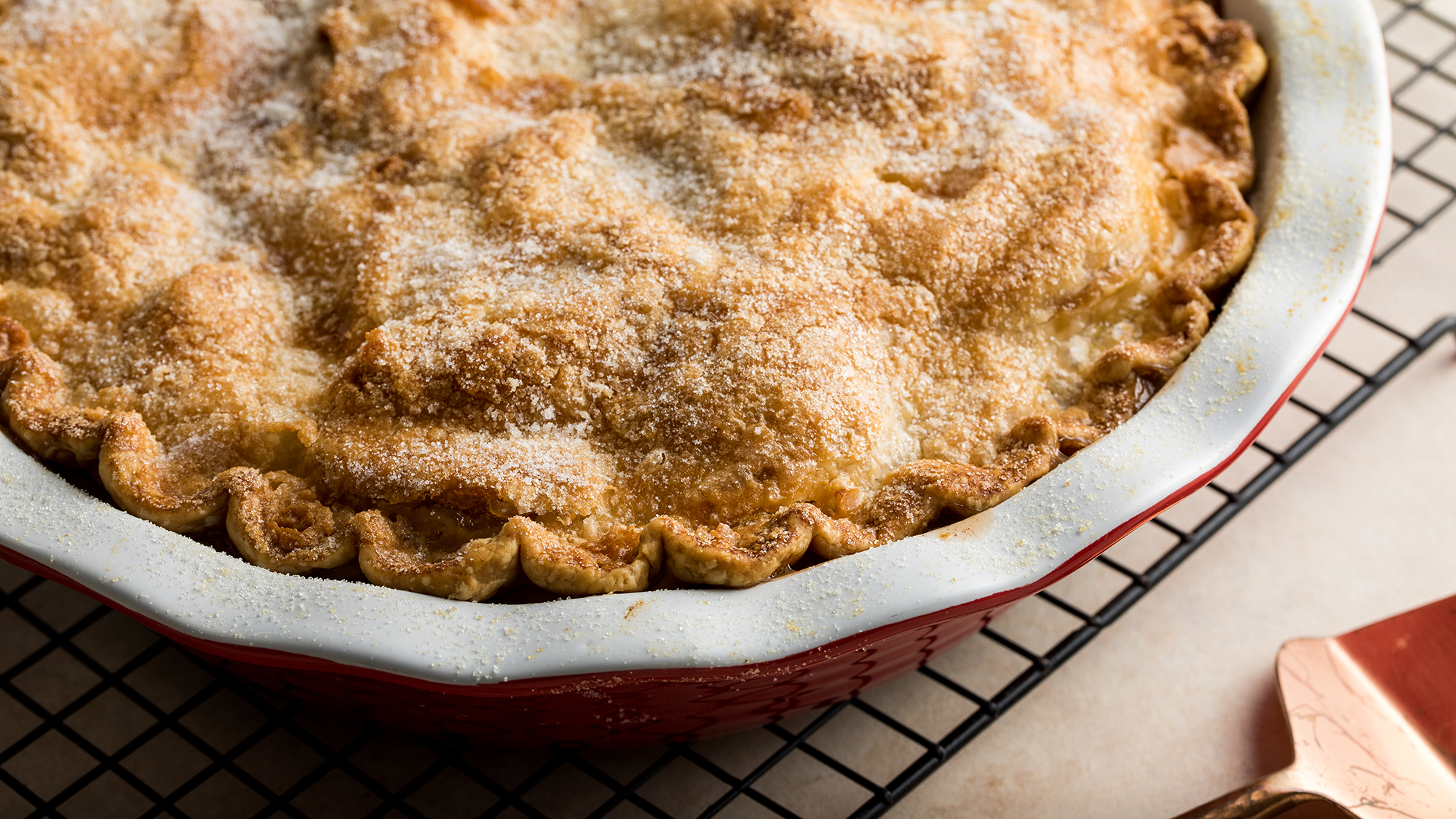Casseroles are the ultimate make-ahead, freezer-friendly meal. These five rules of thumb will help make freezing and reheating casseroles more successful.
Casseroles are a foolproof way to feed a crowd, both large and small. They also make for an easy dinner when you don't have time to stir a bubbling pot or mind a steaming pan. They're even handy to have in the freezer when time is crunched in a busy week.
In fact, casseroles are an excellent make-ahead meal because of how easy they are to prep, cook, freeze and store. The extra effort is minimal – you can double a recipe, freeze one and serve the other – and you're gifting yourself a mostly kitchen-free night at some point down the road.
If you're worried that a frozen casserole can't stand up to the fresh version, think again. When cooked and stored correctly, almost any casserole tastes just as delicious as the day you first made it. Keep these tips in mind before you start cooking the casseroles you plan to stash away, and you won't be able to tell the difference once dinner is on your plate.
1. Don't Cook the Casserole Completely
Anytime you cook a casserole, whether it's going into the freezer or not, you should try to cook your ingredients al dente, or cooked but still crisp. Al dente typically refers to pasta, but in the case of casseroles, it simply means not to cook ingredients, including grains, pasta and veggies, to the point of being completely done. Al dente ingredients still have a toothsome bite, but they can stand up to freezing and reheating much better than ingredients that are already fully cooked. They also won't overcook in the casserole's final heating phase.
If you use fully cooked ingredients in a casserole, they may turn mushy. Save yourself from a goopy mess, and stop the cooking process just a few minutes early.
Meat is one exception to this rule. Thoroughly cook any meat for a casserole you intend to freeze before adding it to the other ingredients. This way, you won't have to worry about heating the casserole to a specific temperature to complete the meat's cooking before serving. Instead, you will just need to focus on gently reheating the dish to serve.
2. Cool Off the Casserole
Your casserole should spend three to four hours in the fridge before you wrap it and move it to the freezer. Putting something very warm directly into your freezer can partially thaw the food around it, which is a food-safety hazard.
Plus, the steam that rises from the surface of a hot casserole condenses and freezes on top of the casserole. This adds unwanted moisture to your casserole and can result in a mushy mess when it's time to thaw and reheat.
3. Seal the Dish Correctly
Photographer: Grant Webster, Food Stylist: Holly Dreesman, Prop Stylist: Lexi Juhl
A good seal around your casserole dish prevents your dish from sharing all its lovely flavors with the rest of the food in the freezer and vice versa. It can also slow the growth of freezer burn. This frosty layer on food doesn't change the flavor much, but it could compromise the texture.
Once the casseroles have cooled in the fridge, cover each dish with a layer of plastic wrap, followed by a layer of foil. With both layers working together to keep out odors and frost, the casserole will taste fresh for up to three months.
4. Thaw Before Cooking
While it would be ideal if you could slide your casserole from the freezer right into the oven, it's not a great idea for several reasons. First, even in a hot oven, a frozen casserole takes hours to thaw, and the cooking will always be uneven. The edges will brown and bubble, while the center is still cool to the touch, even icy.
Secondly, not all baking pans are freezer-to-oven friendly. If your dish isn't suited for this, it may break or shatter in your oven, leaving you with a big mess to clean-and no dinner.
Instead, think a day or two ahead, and let the casserole you plan to serve thaw in the fridge before you cook it. You'll have an evenly baked casserole in half the time.
5. Add the Finishing Touches Later
If the casserole recipe calls for a final layer of cheese or a crunchy topping like crushed crackers, skip that step until you're reheating the dish. This way, you won't lose any of the topping in the event it freezes to the covering, and you'll preserve the crunch of any fresh toppings. Tape on a note with the date you froze it and reheating directions, plus a reminder of any toppings to add.
This article was written by Hilary Meyer from EatingWell and was legally licensed through the DiveMarketplace by Industry Dive. Please direct all licensing questions to legal@industrydive.com.











